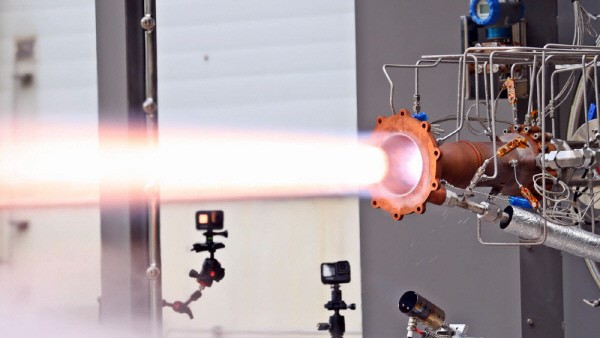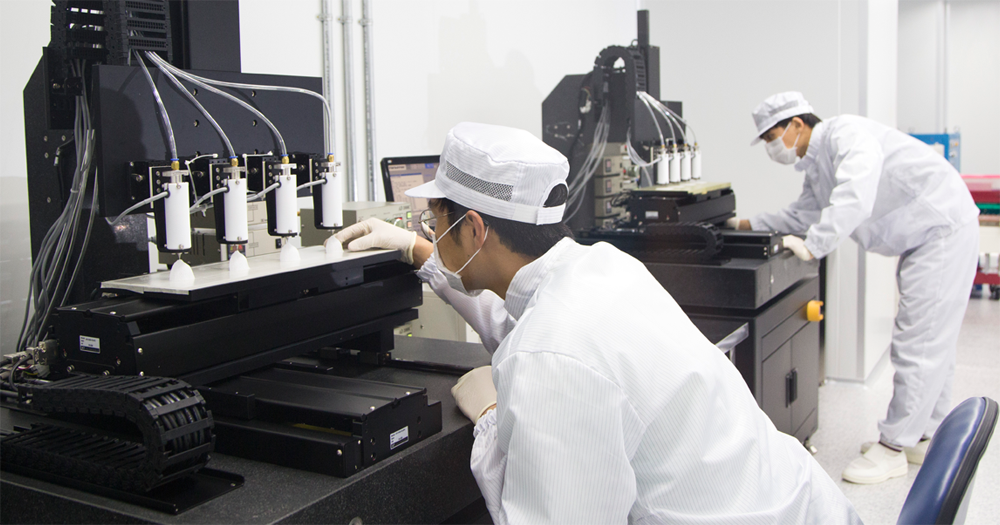South Korea has been steadily increasing its involvement in additive manufacturing (AM), particularly in the post-2010s, with the government’s “Manufacturing Innovation 3.0” strategy placing AM at the forefront. This initiative, modernizing manufacturing and fostering smart factories, has propelled 3D printing integration. Government grants and the creation of AM-centric industrial parks have further spurred adoption among SMEs. A notable increase in international AM collaborations and standardizations, coupled with a substantial $70 million R&D investment in 2023 by the Ministry of Science and ICT, marks a significant push in developing 3D printing technology. With around 400 active AM companies, South Korea is diversifying its AM applications across medical, aerospace, defense, automotive, and other industries, highlighting its growing influence in the global AM landscape.
General Trends in South Korea
The 3D printing industry in Korea is growing consistently, with many companies investing in productivity improvement, supply chain reorganization, and manufacturing innovation. One of the significant trends in the Korean industry is the development of AM process automation, which includes the entire AM process, such as workflow, equipment operation, and post-processing. This trend is in response to the increasing demand for digital manufacturing as part of Industry 4.0.
Another trend is increased on-demand and personalized product production using AM technology. As digitization, AI, and AM technology continue to advance, on-demand production and personalized product production using AM technology are gaining more attraction in the manufacturing industry. In particular, the production of customized products, such as implants, prosthetic limbs, and shoes, is increasing significantly in the medical/dental and apparel/fashion industries, where digitalization is being promoted.
Furthermore, the size of 3D printed part output in the Korean AM market has increased, with global AM companies like EOS offering increased output sizes through the release of AMCM machines that print over 1,000 mm in size. As a result, there has been a growing number of users adopting large scale AM solutions for unprecedented applications in the automotive and semiconductor industries.
The Korean market also sees an increasing demand for highly-strength and heat-resistant engineering plastics that can replace metal parts in the electrical/electronic, automotive, and machinery industries. In particular, in the rapidly growing electric vehicle industry, the use of engineering plastics is increasing significantly to respond to environmental regulations in addition to efforts to reduce weight. The demand for metal AM technology in high-value-added industries such as aerospace, automotive, defense, medical, and dental is also increasing, further expanding the related market.
However, the domestic 3D printing industry is still in the process of development with the preference for foreign products is deepening due to the high technology and application industry know-how of foreign companies such as Stratasys, 3D Systems, EOS, and Materialise. Despite this, Korean companies are making progress in developing their AM-related technologies and applications, and the market is expected to grow further.
Peek into the Korean Landscape: 10 Industries
1) Aerospace
The aerospace sector in South Korea has been making significant strides in integrating 3D printing technologies, primarily for prototyping purposes. This integration is pivotal in components like engines and communication devices, though the application remains limited due to the lack of established standards and constraints in material capabilities.
Key players in the industry, such as Korean Air, are at the forefront of using 3D printing for manufacturing efficient engines, indicating a shift towards innovative manufacturing approaches. Similarly, the Korea Aerospace Research Institute (KARI) has successfully utilized metal 3D printing technology to fabricate a dual regenerative cooling combustor for a one-ton thrust liquid oxygen/methane engine. This application of 3D printing has notably reduced the prototype production time by a third.
Another significant contribution comes from the Korea Institute of Industrial Technology (KIIT), which developed a technique using 3D printing for spacecraft propellant tanks. This innovation resulted in a 12% increase in space efficiency and a 27% reduction in component weight compared to traditional parts, showcasing the potential of 3D printing in enhancing the performance and efficiency of aerospace components.
Despite these advancements, the sector faces several challenges that hinder wider adoption. The absence of specific performance standards for 3D printed parts in aerospace is a significant hurdle, making performance evaluation and practical application difficult. Additionally, the current limitations in material properties and technological capabilities restrict the load-bearing capacity of printed parts, which is crucial in aerospace applications. The market size for these advanced applications is still developing, leading to slower progress in equipment investment. There’s a pressing need for industry-specific 3D printing processes and equipment development tailored to meet the demands of the aerospace sector.
 Image Courtesy: Korea Aerospace Research Institute
Image Courtesy: Korea Aerospace Research Institute2) Automotive/Mobility
The automotive industry is a crucial part of the Korean manufacturing industry. As a result, it has vast potential for AM growth in the country. AM has become increasingly popular in the automotive industry as it can quickly create prototypes and reverse engineer parts. This is particularly beneficial in a sector where design requirements often change, and time is of the essence.
However, while AM technology is mainly used for prototyping in the manufacturing of parts such as battery modules, interior components, robot sensor brackets, wheels, dashboards, door panels, and steering wheels, the major challenge for widespread adoption is meeting industry standards and keeping up with mass production volumes due to durability issues and higher production costs compared to traditional methods.
Despite these challenges, the future of AM in the automotive industry looks promising. Metal 3D printing for parts production, Urban Air Mobility (UAM) applications, and autonomous robot products for weight reduction are potential directions for the industry. These developments could create more durable parts and reduce production costs, ultimately leading to better products for consumers.
In the Korean market, 3D Solution is one of the notable players in the automotive field, having become an official vendor of Hyundai Motors in 2020 and supplying 3D-printed jigs for use in their production lines. Ajin Industrial, one of Hyundai’s primary partners, has adopted EOS equipment and is also actively researching metal AM technologies. These companies are working towards making AM more efficient and cost-effective while keeping it the core driver of innovation, which could lead to a significant increase in the use of AM in the automotive industry.
Hankook Tire uses metal AM technology to mass-produce next-generation tire cuffs and plans to do the same for integrated tire molds.
 Image Courtesy: Hankook Precision Works
Image Courtesy: Hankook Precision Works3) Medical/Dental:
The primary use of AM has been to create patient-specific medical components and surgical guides to ensure efficiency. Both polymer and metal materials have been adopted for creating medical devices such as prosthetic skin, phonetic molds, implants, intervertebral fusion devices, spinal cages, and more. Surgical guides such as skin cancer surgical guides are also produced using AM. Simulation tools such as simulators and drug development in the pharmaceutical industry are also some of the applications of AM.
Anymedi Solutions is a AM company specialized in surgical applications. They are known for creating patient-specific surgical guides, particularly for complex cancer surgeries and aortic reconstructions. A significant achievement was the development and commercialization of the world’s first 3D-printed, patient-specific surgical guide for breast cancer resection, which has been recognized as an innovative medical technology and is in use at top-tier medical institutions. They did 700+ clinical demos, published 13 papers, and registered three patents. Their breast cancer guide received FDA/CE certification & is in use globally.
Medical IP, which developed AI-driven MEDIP software to transform CT and MRI scans into 3D models, was the first Korean company to receive FDA/CE approvals for medical software. Their advancements have led to the development of 3D printing solutions that mimic the physical properties of human organs, a significant breakthrough in medical 3D printing technology.
Dentium, a well-known dental company in Korea, introduced the ‘Rainbow Metal Printer’ in 2021, a metal AM machine designed to cater to the dental industry’s needs. This machine is currently being used to produce spinal cages for medical purposes. It is being further developed to serve a wide range of dental applications, showcasing Dentium’s commitment to advancing dental technology through AM.
AM also extends to bio 3D printing applications. T&R Biofab, a Korean pioneer in 3D bioprinting technology, is moving towards its first FDA approval for a Craniofacial Implant (CFI), a significant step towards global market expansion, highlighting the potential of 3D bioprinting in medical applications.
 T&R Biofab engineers work on bioprinted products and medical implants. Image courtesy of T&R Biofab.
T&R Biofab engineers work on bioprinted products and medical implants. Image courtesy of T&R Biofab.4) Power/Plant:
The sector adopts 3D printing for localization of power parts production, application of high-performance, difficult-to-machine materials, and optimization of manufacturing processes. Gas turbine components and nuclear cooling pump parts are among the current uses, focusing on localizing parts and expanding field applications.
Doosan Enerbility has developed over 1600 AM parts, including 400 small-scale produced items. One of their notable accomplishments was the production of an independently manufactured “Gas Turbine Combustor Nozzle” using AM technology.
Hanwha Aerospace has also begun to localize gas turbine parts using AM technology. They have launched the national project ‘Development of materials and parts manufacturing technology for composite shapes of nickel-based super heat-resistant alloys’ in 2022, which aims to develop AM materials and localize parts manufacturing technology for nickel-based super heat-resistant alloys used in gas turbine equipment for power generation and propulsion engines for the aerospace industry by 2025.
Besides, Korean Western Power successfully demonstrated the first field application of ten out of fifteen parts created using 3D printing in 2020, proving their durability with a three-month operational period free from performance degradation like vibration or leaks, showcasing the reliability of 3D-printed components in practical applications.
 Image Courtesy: Doosan Enerbility
Image Courtesy: Doosan Enerbility5) Defense/Military:
The motive behind adopting AM in this sector is to produce discontinued or difficult-to-source military parts. The technology spans plastic and metal, with current usage for parts in various military equipment, producing components for unmanned aerial vehicles (UAVs), and creating virtual construction simulations.
Future developments include expanding AM applications to produce key metal parts for the Korean Amphibious Assault Vehicles (KAAV) and other defense hardware.
Between 2019 and 2021, the South Korean Ministry of National Defense utilized AM to produce over 13,000 parts, resulting in approximately 2.1 billion won in cost savings.
LIG Nex1 signed an MOU with Optisys to design and develop metal 3D printed antennas and establish a cooperation system in digital manufacturing technology in 2022. LIG Nexon has been applying metal AM technology to the defense field since 2020 by establishing an in-house metal 3D printing facility.
6) Consumer Electronics/ICT:
In South Korea’s electronics sector, 3D printing has been primarily used for prototyping and spare part production. While electronics are a crucial part of the Korean economy and hold great potential for AM, its application remains limited mainly due to the manufacturing cost and productivity. However, there is potential for AM to be used for producing high-end electronics and peripherals, as well as to cater to small-volume custom product demands for further adoption in the future.
LG Electronics Changwon R&D Center has utilized 3D printing technology to reduce the model production time by 30% and costs by 700 million KRW annually at the LG Electronics Refrigerator Research Institute.
7) Apparel/Fashion:
While the ease of creating fashion-related prototypes is the primary reason for 3D printing adoption, some Korean companies are generating revenue through customization services such as tailored suits and personalized glasses.
Breezm, leveraging 3D scanning and 3D printing technologies, offers a customized glasses frame tailored to individual facial dimensions, shapes, and skin tones, demonstrating AM’s versatility and personalization capabilities in consumer applications. Breezm has nine stores in Korea, and about 50,000 customers have visited their stores in the past five years, with a cumulative sales volume of 15 billion won. Based on its technology, Breezm plans to open an offline store in Manhattan in the first quarter of 2024.
 Image Courtesy: Breezm
Image Courtesy: Breezm8) Building/Construction:
In the construction industry, AM has been adopted for productivity enhancement, cost savings, and ESG management practices. Although current Korean laws restrict the use of 3D printing in habitable structures, leading to minimal revenue generation, there’s potential for future construction applications.
Hyundai Engineering & Construction won the 2021 Architizer A+ Product Award for its unique bench-making technology that uses 3D printing. They also won the main prize at the ‘2023 IDEA Design Award’ for their ‘Rabbit Playground,’ an apartment playground facility.
9) Semiconductor:
AM in the semiconductor industry is in its early stages, and some technical challenges must be addressed before it can be fully utilized. The need for high-resolution printing, suitable materials, and new standards and certifications are some of the hurdles that must be overcome. Nonetheless, AM can potentially revolutionize the industry by facilitating more efficient design, manufacturing, and testing processes. It could help semiconductor companies maintain competitiveness in the rapidly changing technological landscape. As technology continues to evolve, it is expected to play an increasingly important role in shaping the industry’s future.
Wonik IPS, a semiconductor equipment manufacturer, installed the EOS’ AMCM M450-1kw metal machine in their facility earlier this year. In addition, Dongwon Parts, a manufacturer of parts for semiconductor equipment, signed a memorandum of understanding (MOU) with EOS for technical cooperation in expanding metal 3D-printed semiconductor parts and installed a machine in house.
10) Shipbuilding:
AM is currently used in the Korean shipbuilding industry to develop various ship components, including propellers. However, there are challenges for the broader adoption of conventional AM technologies due to limitations in meeting specific requirements such as part size, weight, strength, and other company-specific needs. Despite the current limitations, there is a future outlook toward producing large engine parts using AM technology in the industry.
In 2022, major South Korean entities, including Hyundai Heavy Industries, KITECH, the Electronics and Telecommunications Research Institute (ETRI), Ulsan Information Industry Promotion Agency (UIPA), DNV GL (Norwegian classification society), SY Metal, and K-AMUG signed a business agreement for the development and classification certification of ship propellers based on AM technology.
Conclusion
In conclusion, South Korea’s involvement in 3D printing reflects a strategic, multifaceted approach across various industries. From aerospace and automotive to defense, medical, consumer electronics, and fashion, the country is leveraging AM for innovation, efficiency, and customization. Despite the challenges commonly faced in the Asian market like cautious integration approach, prioritizing clear, incremental benefits and efficiency in AM adoption, South Korea is progressing towards integrating this technology in traditional manufacturing and exploring new applications. The government’s significant investment and support, combined with the collaborative efforts of industry players, are setting the stage for South Korea to be a key player in the global AM landscape.
Feature image: Doosan Enerbility’s AM facility in Changwon. Image Courtesy: Doosan Enerbility
Subscribe to Our Email Newsletter
Stay up-to-date on all the latest news from the 3D printing industry and receive information and offers from third party vendors.
You May Also Like
Further Understanding of 3D Printing Design at ADDITIV Design World
ADDITIV is back once again! This time, the virtual platform for additive manufacturing will be holding the first-ever edition of ADDITIV Design World on May 23rd from 9:00 AM –...
3D Printer Maker EVO-tech Reborn as NEVO3D — Once More With Feeling
EVO-tech was a 3D printing service and original equipment manufacturer established in 2013 and based in Schörfling am Attersee, Austria. The company produced high-quality material extrusion systems featuring linear bearings,...
3D Systems Brings 3D Printed PEEK Cranial Implant to the U.S. with FDA Clearance
For more than 10 years, 3D Systems (NYSE:DDD) has worked hand-in-hand with surgeons to plan over 150,000 patient-specific cases, and develop more than two million instruments and implants from its...
CDFAM Returns to Berlin for Second Annual Symposium
The second CDFAM Computational Design Symposium is scheduled for May 7-8, 2024, in Berlin, and will convene leading experts in computational design across all scales. Building upon the first event...
































